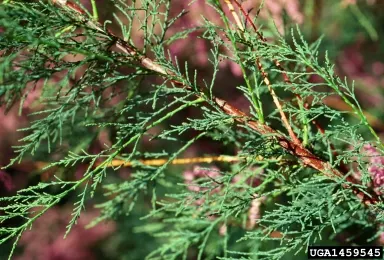Let’s Talk Tamarisk
What is Tamarisk?
Photo sourced from UC Davis School of Education.
Tamarisk is the perfect story of environmental restoration gone wrong. Originally, the shrub was brought in to the midwest to provide erosion control for streambeds. Only then did we realize the invasive quality of the plant. Tamarisk grows impenetrable thickets and increases the salinity of surrounding soil making it hard for native plants to establish, the plants roots can tap into underground aquifers and with an an extremely rapid evapotranspiration rate, there is a fear that this rapid loss of moisture could possibly cause serious depletion of groundwater. It can also effect the frequency and intensity of wildfires. Tamarisk plants have a rapid growth rate and can grow up to 12 feet in a season. They spread very easily and take over watershed ecosystems, where willows and mulefat once thrived. Now they have taken over 1.6 million acres watershed habitat throughout the California, Arizona, Nevada and Oregon.
Methods of Control
Photo sourced from the Albuquerque Journal.
In the past, scientists brought in the nonnative salt cedar beetle as a biological control. The beetle eats leafs and tender bark on trees causing the rest of the foliage to die. This causes the trees to use less water and encourages grasses and small plants to grow where the foliage used to block out sunlight. Unfortunately, introducing the beetle to new areas caused unforeseen consequences. As the beetle spread, bird habitat was threatened and now this is not considered the best method of control for tamarisk control.
Currently, a good solution to stopping the spread of tamarisk is properly hand pulling the shrubs and small trees to ensure all of the roots are removed and the seeds do not spread.
What Can We Do for Our Watershed?
This year Green Valley Project Youth Council will be working with the CREW and a team from UC Davis to determine a long term management plan for the removal of invasive species such as the tamarisk from our watershed. After learning how to properly identify and remove tamarisks,Youth Council leaders will host 3 community events in the Fall to remove tamarisk and other invasive species that threaten our watershed.
For now please look at the information below to learn how to properly removal of tamarisk plants:
Photo sourced from the National Park Service.
How to Identify Tamarisk:
Depending on the species, they may be 15 to 50 feet tall when mature and some are deciduous in the winter. Up close, the feathery branches resemble cedars or junipers, with tiny triangular, scale-like leaves on fine twigs.
How to properly remove the plant:
Cut back top growth and carefully bag for removal ( we don't want any seeds to fall off and a new plant to take the old ones place).
Dig out the plant and all the roots
Backfill the Hole
For More Information Check out the Following Resources
What is tamarisk? | U.S. Geological Survey (usgs.gov)
Tamarisk — Northern Arizona Invasive Plants
Tamarisk - the Noxious Western Tree (treehugger.com)
CILab: Invasive Species: Tamarisk's Use of Water (nasa.gov)
Tamarisk - Saguaro National Park (U.S. National Park Service) (nps.gov)



